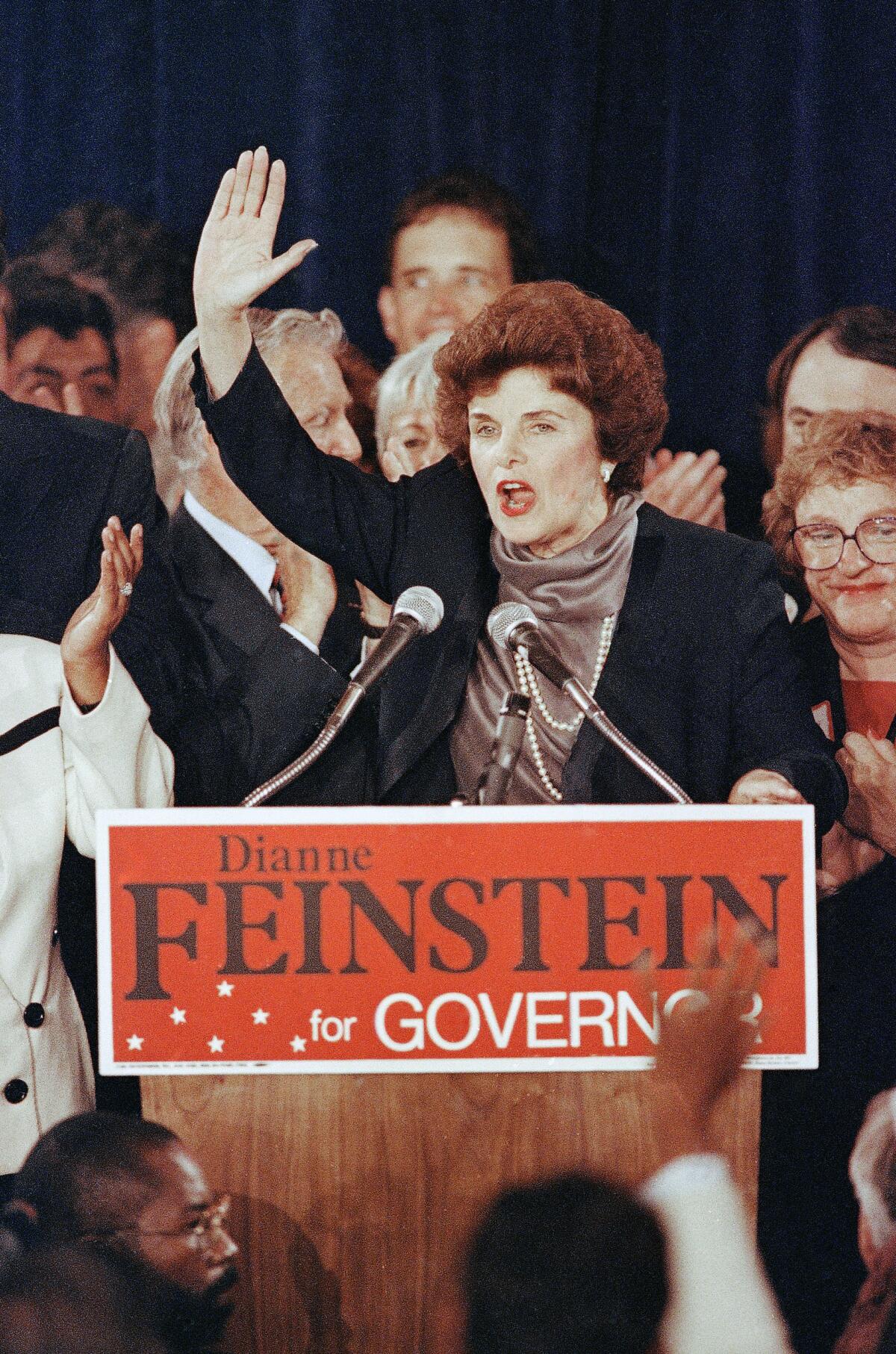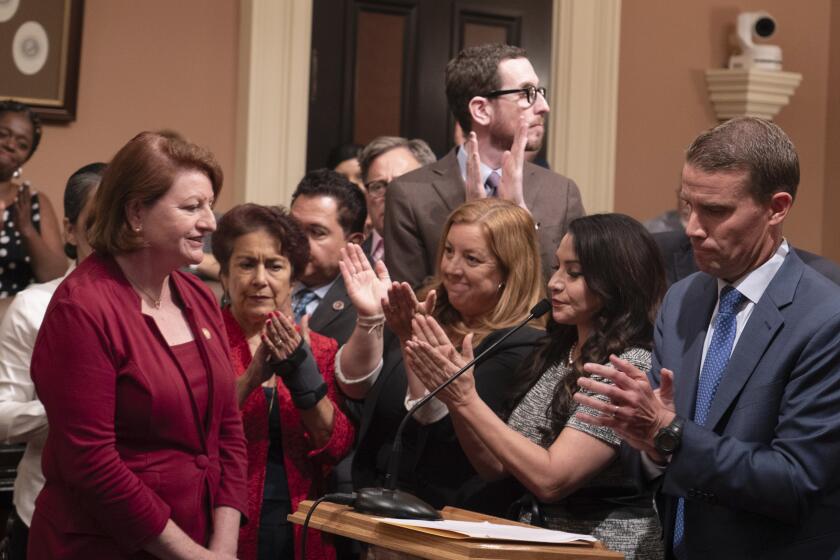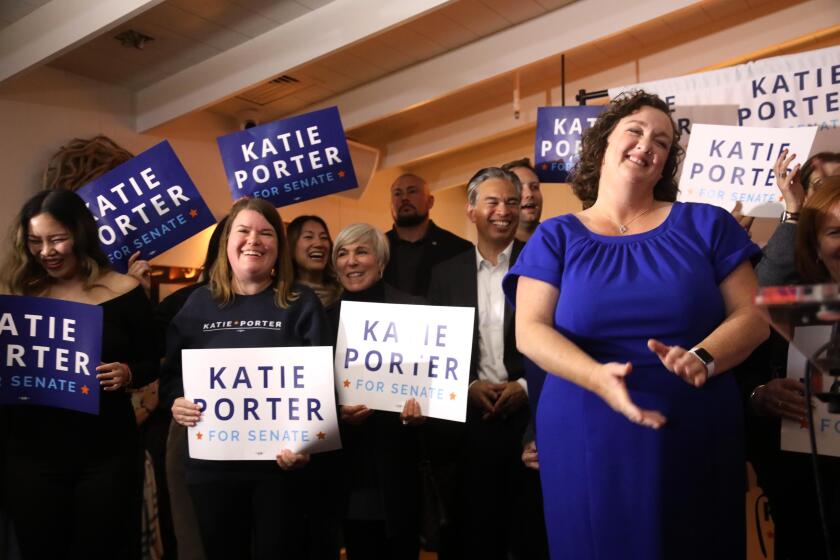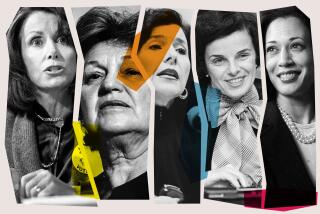Column: More than 30 states have elected female governors. Will California finally join them?

In 173 years as a state, California has had 40 governors.
Democrats, Republicans, members of the Unionist and Know-Nothing parties.
Merchants, lawyers, former mayors.
A bodybuilder-turned-movie star. Two movie stars, actually.
But never a woman.
It’s a fact that stands out like Half Dome. This, after all, is a state that fancies itself a progressive path-breaker and bastion of open-minded opportunity — and made history in 1992 by becoming the first to elect two women to serve as U.S. senators at the same time.
And yet as Mindy Romero, director of USC’s Center for Inclusive Democracy, put it, “We still have that glass ceiling” when it comes to the governor’s office.
However, that all-white-male hegemony could finally come to an end in 2026.
Democrats Eleni Kounalakis, California’s first female lieutenant governor; Toni Atkins, the first woman to lead both the Assembly and state Senate, and former state controller Betty Yee have all declared their candidacies to succeed the term-limited Gavin Newsom. Each is a credible candidate, in what’s shaping up to be a large and unusually varied field.
It’s way too early, of course, to size up a contest two years off; no one knows what will happen in the presidential election just about seven months from now. But California voters could make history in 2026 in several ways.
Any regional advantage has apparently been wiped away by the nationalization of politics, the everywhere reach of social media and, especially, the star-making capacity of TV news.
Democratic Atty. Gen. Rob Bonta, a possible gubernatorial contestant, would be the state’s first Filipino American governor. State schools chief Tony Thurmond, a fellow Democrat who launched his candidacy last fall, is bidding to become California’s first Black and Latino governor. Atkins would be the state’s first openly LGBTQ+ governor, as well as its first female chief executive.
All would be noteworthy achievements.
But in a state where women outnumber men among registered voters, electing a female governor would not just fill a glaring gap in the state’s leadership roll but also end one of California’s more curious political distinctions.
There have been 49 women — 30 Democrats and 19 Republicans — who have served as governor in 32 states, according to the Center for American Women and Politics at Rutgers University. A dozen states currently have female chief executives.
Arizona holds the record, with five women serving as governor. Kansas, New Hampshire and Oregon have each elected three. A handful of states have had two.
Why none in California?
There seems to be no particular reason — at least not in recent decades, once women finally began to gain a measure of political equality and attain the stature to compete for the state’s highest elected offices.
It can’t simply be written off as misogyny.
In addition to electing three female U.S. senators, Californians have elevated numerous women to statewide office. Fifty out of 120 legislative seats in Sacramento are held by women, and about a third of the California congressional delegation is female.
All five members of the Los Angeles County Board of Supervisors are women, and Los Angeles has a female mayor, as does San Francisco and scores of other cities, from Rancho Cordova in the north to Murrieta in the south.
There’s not a long history of women vying for California governor. Only a handful have had a serious shot: Democrats Dianne Feinstein and Kathleen Brown and Republican Meg Whitman.
California is poised to lose female representation in the U.S. Senate. Thankfully, there are plenty of politically powerful women in the Statehouse.
Feinstein came closest to winning. In 1990, she became the first woman in state history to garner a major party’s nomination for governor. She narrowly lost to Republican Sen. Pete Wilson.
Bill Carrick, the chief media strategist for Feinstein’s campaign, recalls her narrowly leading the contest until Operation Desert Shield, which set the stage for the Gulf War. Support for Wilson grew as President George H.W. Bush rallied the country and assembled an international coalition that eventually rolled back Saddam Hussein’s invasion of Kuwait.
“You saw a big Republican uptick because of it,” Carrick said.
Was it a case of voters embracing the GOP and its candidates to reward Bush and his party? Or did the perils of wartime make them question a woman’s capacity to serve as California governor?
Carrick is not certain. Maybe it was both.
In falsely claiming California’s primary was rigged, Katie Porter is emulating Donald Trump and recklessly undermining faith in our embattled elections system.
Back then, he said, even “some liberal-minded people” had doubts about Feinstein’s political viability. “I don’t think there’s that sort of hesitancy” today, he said.
(If you go back further, to 1969, when Feinstein made her first run for the San Francisco Board of Supervisors, everyone — including her father — told her a woman couldn’t win. She proved them wrong.)
Feinstein exacted a measure of revenge two years after her defeat in the governor’s race when she beat Wilson’s handpicked successor, John Seymour, to claim a Senate seat she held until her death in September.
The success of Feinstein and others who came after cut a much clearer path for those following their footprints.
“As the years go on, women candidates clearly have an easier time than they ever have,” said Gale Kaufman, a veteran Sacramento strategist who helped elect many Democratic women to office.
“It wasn’t all that long ago people would ask, ‘Can a woman handle the job of governor?’” Kaufman said. “I don’t think anybody would ask that question now.”
That augurs well for those running in 2026. It doesn’t guarantee a woman will be elected California’s next governor, but it seems much more likely.
It’s about time.
More to Read
Get the latest from Mark Z. Barabak
Focusing on politics out West, from the Golden Gate to the U.S. Capitol.
You may occasionally receive promotional content from the Los Angeles Times.














